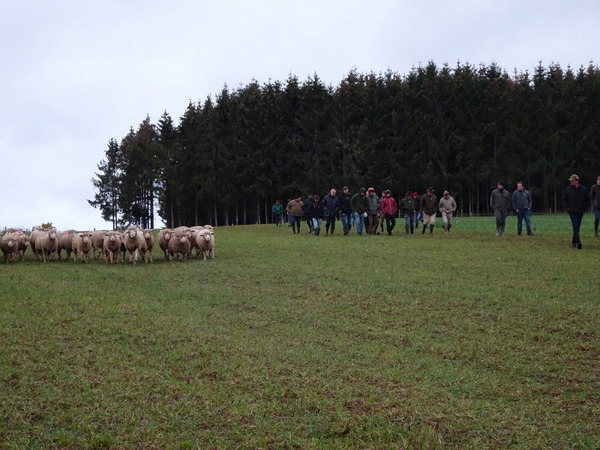As much as 58 %: this is the percentage of the Walloon area recognized as nitrate vulnerable and therefore requires cover crops to replenish the soil. Nevertheless, cover crops are not limited to these 58 %; they occur today in most Walloon arable farms. However, they are still widely perceived as mandatory crops and not really as service crops that benefit the agricultural system. As a result, Walloon cover crops are now predominantly composed of one (mustard) or two species, and most of them are destroyed at the end of the season instead of being utilized.
A handful of sheep farmers have realized that adding value to cover crops through sheep grazing could be an economic, agronomic and environmental opportunity for both sheep and arable crop farmers. Through their discussions, they convinced a handful of arable crop farmers to test the practice with them. This resulted in four partnerships between sheep farmers and arable crop farmers, which were followed by DiverIMPACTS case study 4 in 2017 and 2018. In some cases, this partnership involved the introduction of multi-species cover crops.
Today, these sheep and arable crop farmers want to continue their experiences and explore the positive and negative points associated to this practice in order to encourage its development on their own or on other farms. Indeed, the practice and its impacts are not well studied, even less so when it is carried out in partnership between a sheep farmer and an arable crop farmer, who typically have poor relationships. Moreover, like any unknown, the practice raises questions and fears.
That is why, in 2018, the case study focused on demonstrating to other farmers that the practice exists and is feasible, and on identifying the many questions this practice raises. The arable crop farmer observed, for example, that sheep are able to replace the mechanical or chemical cover crop destruction. Similarly, the sheep farmer observed that containing the sheep to the cover crop is easy. Three demonstrations of this practice were therefore performed within major Walloon agricultural events and one thematic day took place in 2018. These activities have raised awareness among hundreds of people and enriched the case study with three new partnerships.
There are many more possible interactions between sheep and cover crops. In the coming months, the case study will focus on clarifying a panel of agronomic, economic and environmental interactions by surveying the farmers followed by the case study but also through on-farm trials. Already, trials have been set up within the farms monitored by DiverIMPACTS to study, among other things, the quantity and quality of biomass available, and the impact of this practice on nitrogen dynamics. These on-farm trials will be repeated for three consecutive years.
On the social side, interactions between sheep farmers and arable crop farmers are also complex: in addition to the lack of relationships between these two types of farmers, arable crop farmers attribute a strong emotional value to their land and often feel like they are "giving a gift" to the sheep farmers. Step by step, DiverIMPACTS case study 4 aims to develop tools to allow the sheep farmers and arable crop farmers to establish innovative and win-win partnerships. One of the conditions for such a partnership is changing the arable crop farmers’ consideration toward the cover crop: tomorrow, with a more diversified vision, they will consider the sheep farmers as equal partners and the cover crop as a real service crop, with a real added value through sheep grazing.
Further information
Authors
Christel Daniaux, Collège des Producteurs, Belgium
Daniel Jamar, Walloon Agricultural Research Center (CRA-W), Belgium

 tap and then scroll down to the Add to Home Screen command.
tap and then scroll down to the Add to Home Screen command.